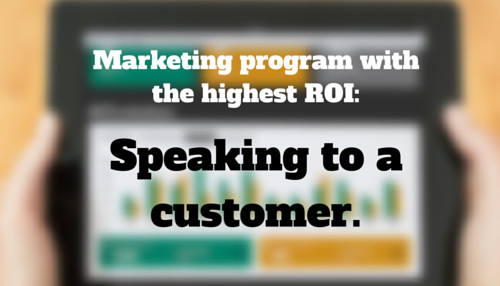
Imagine you’re the head of Marketing for the local burger joint. The manager holds you responsible for bringing new customers in the door. You did it! A couple walks in the door holding the 2-for-1 coupon that you distributed. The manager grabs two menus and seats them at the corner table.
As Marketers, we’re inclined to pat ourselves on the back at this point and go find the next customer. And that would be so wrong. Instead, we’d find it useful to observe the couple’s meal and ask them how it was afterwards. Did they come solely to cash in the coupon, or did they hear about our double cheeseburgers? Would they recommend us to a friend?
A Real-World Example
Recently, I attended a panel discussion hosted by the Customer Experience Professionals Association (CXPA — San Francisco chapter). One of the panelists, a VP Customer Success, commented that he was looking to hire a marketer to do customer marketing, because “I can’t get the attention of my Marketing team.”
During the audience Q&A, I asked him why. He told me that the Marketing team is two people and their focus is all on demand generation (i.e. bringing new business in the door). I can understand this: with two people, you need to focus on what matters most.
That being said, focusing 100% on demand generation, even with just two people, may be wrong. Partner with the VP Customer Success and he’ll pair you up with key customers. As a marketer, it will be worth your time.
Let’s consider why.
1. They’ll Help Inform Future Content and Programs
Your current customers were once prospects. Get to know them, because they’re a good proxy for the other prospects you’re trying to reach. Ask them how they found you and what was influential in their purchasing decision (e.g. a specific piece of content, a particular sales rep, etc.). Get to know what motivates them and how they define success. If your customer is a CIO who defines success by helping drive revenue growth, then that’s a great webinar topic for next quarter.
2. They’ll Help with Testimonials and Case Studies
No one wants to hear you talk about what your product does, but they do want to hear your customers talk about what your product does for them. I love to talk to customers, because each conversation is an opportunity. On the one hand, I learn about a customer’s experience. On the other hand, the conversation can lead to a quote, a testimonial or a customer case study.
In addition, industry analysts and reporters want to speak to your customers. How can you accommodate analysts and reporters when they ask for customers to speak to? By spending more time building relationships with your customers. As you gain more media coverage and analyst consideration, your demand generation programs will become more effective.
3. They’ll Help Inform Your Product Marketing
A demand generation team tends to focus on “top of the funnel” content (e.g. white papers and eBooks). You can’t close a sale, however, without having product-specific content. Ask customers how they’re using your product. If you sell a hammer that people buy to hang pictures, then don’t detail the metal in the hammer head. Instead, tell prospects how the hammer works with any nail. Tell them it was used to hang presidential photos in The White House (or insert similar customer use case here) .
4. They’ll Be More Loyal Customers
It costs less to keep a current customer than it does to land a new one. According to Brad Shorr, Director of B2B Marketing at Straight North, “What’s the point of having a big, busy funnel if the bottom is leaking? It’s not very efficient to spend big money to build demand and let those hard earned new customers dump you six months later. In fact, it’s Kafkaesque.”
It takes a team effort to keep a customer, from the Customer Success to Marketing to Engineering. Marketing can help build customer loyalty by listening to their needs, telling their stories and raising their visibility, both inside and outside the organization.
Conclusion
Your current customers are pathways to future ones. If I worked with the panelist from the CXPA event, I’d ask him to introduce me to one customer a week. I’d spend 30 minutes on the phone, hear about their experiences and figure out next steps from there. Whether it’s demand generation or content marketing, each customer conversation makes me more effective at what I’m doing.
Note: I originally published this post to my LinkedIn profile.
